Parsing Piedmont
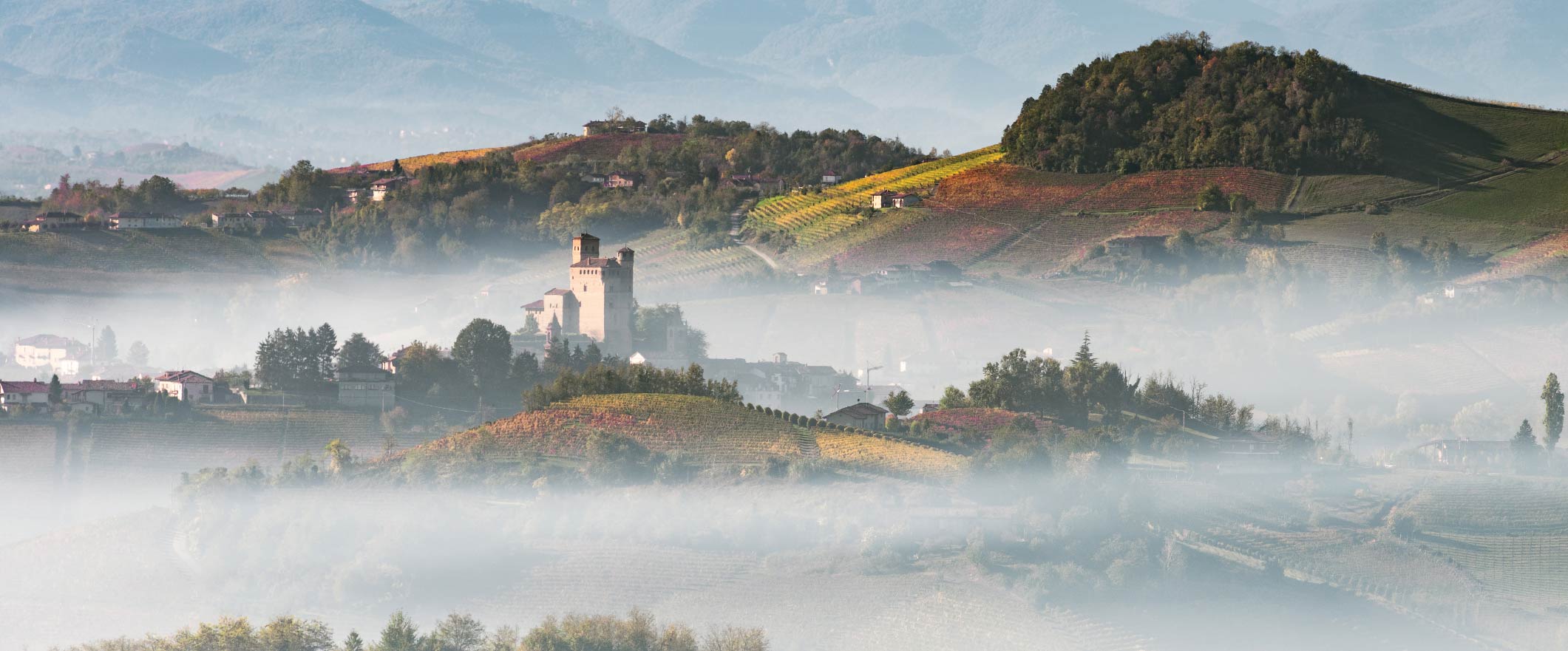
Vintages Feature Story
With its repertoire of legendary and lesser-known grapes, its hills and valleys that provide just the right conditions for each variety, and its picturesque position abutting the Alps, this key Italian region is tops.
Nestled amongst Alpine and Apennine foothills in Italy’s northwest, Piedmont is (along with Tuscany and Veneto) one of the big three Italian wine regions. With its farmhouse wineries and passion for terroir, Piedmont is often described as the Burgundy of Italy. But don’t go looking for Pinot Noir; Piedmont has a world of wine grapes and styles all its own. Here, we’ve collected a taste of what it has to offer.
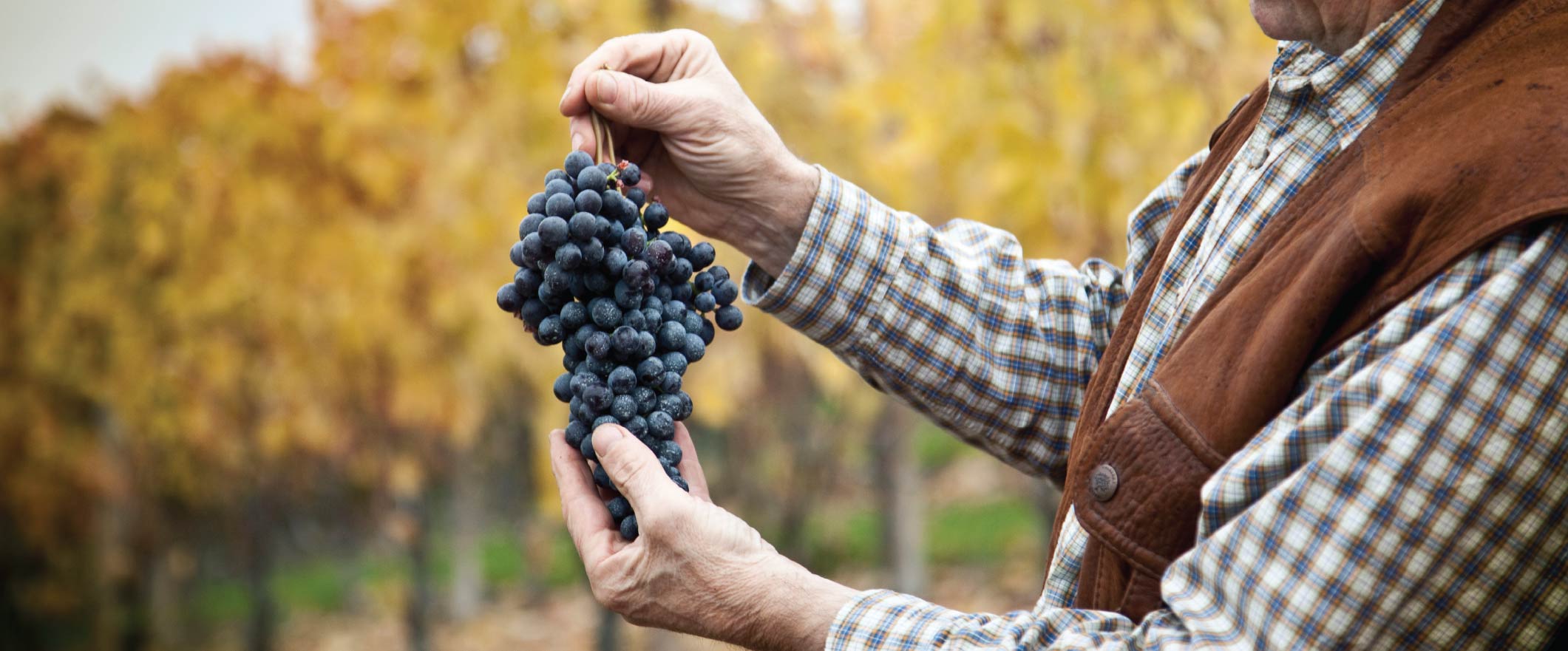
The Lay of the Land
Shaped by the foothills of two mountain chains, Piedmont features soaring slopes and plunging valleys. Most vines are found between 150 and 400 metres above sea level, with each vineyard precisely planted to provide ideal conditions for each grape variety. The sunniest, typically south-facing vineyard slopes are planted to Nebbiolo; chilly hilltop sites are planted to Dolcetto, which does well in cool temperatures; and vigorous Barbera and a handful of other varieties are planted around and between these, in spots warmer than required for Dolcetto and not quite sunny enough for Nebbiolo. Soil types, too, tend to change as you move up the hillsides, with rockier soils at the top and increasingly sandy sedimentary soils towards the valley floors. Curiously, whereas the rolling hills and precise vineyard microsites of Piedmont evoke (and draw frequent comparisons to) Burgundy, Piedmont’s summers are actually closer to Bordeaux’s with respect to temperature and weather patterns.
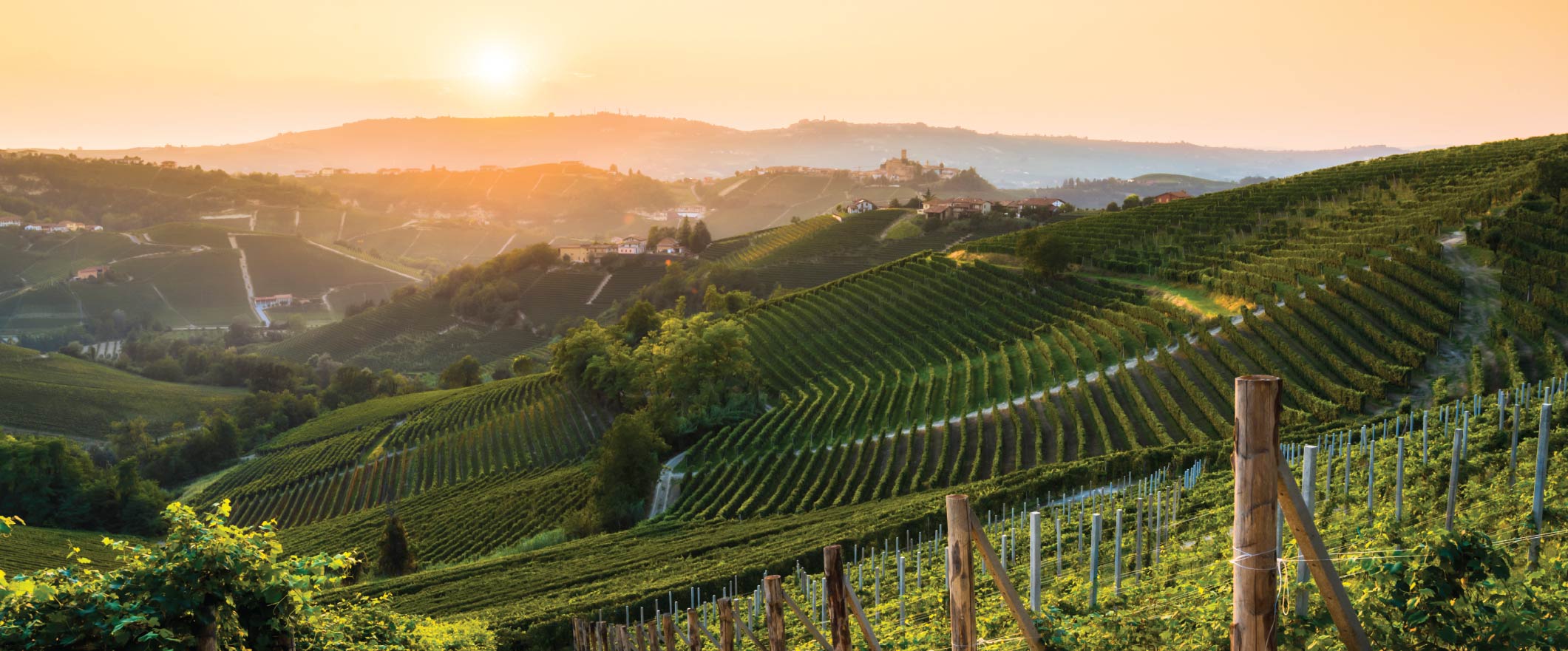
Piedmont’s Red Wines
“The alps form a prominent backdrop here, bordering the region to the north and west. It’s a hilly region that’s renowned for its fog (or ‘nebbia,’ from which the grape variety took its name).” – decanter.com
By far the most celebrated of Piedmont’s wines are made from Nebbiolo. This is the noble grape variety behind Barolo and Barbaresco, and also Gattinara and others. Beloved for its “tar and roses” aromas and flavours, Nebbiolo is even more famous for its formidable tannin structure, which often allows (and sometimes requires) the wines to mature gracefully over decades. Barbera, besides being Piedmont’s most widely planted variety, is known for its tangy cherry fruit and softer tannins, the latter of which make for approachable red wines that are quite versatile with food. Dolcetto, although its name means “little sweet one,” makes dry wines with a gently bitter finish similar to that found in such classic Italian sips as Amaro, Amarone and espresso. The relatively rare (yet very worthwhile) Grignolino variety makes light, affably elegant wines with subtle tannins and brambly berry character.
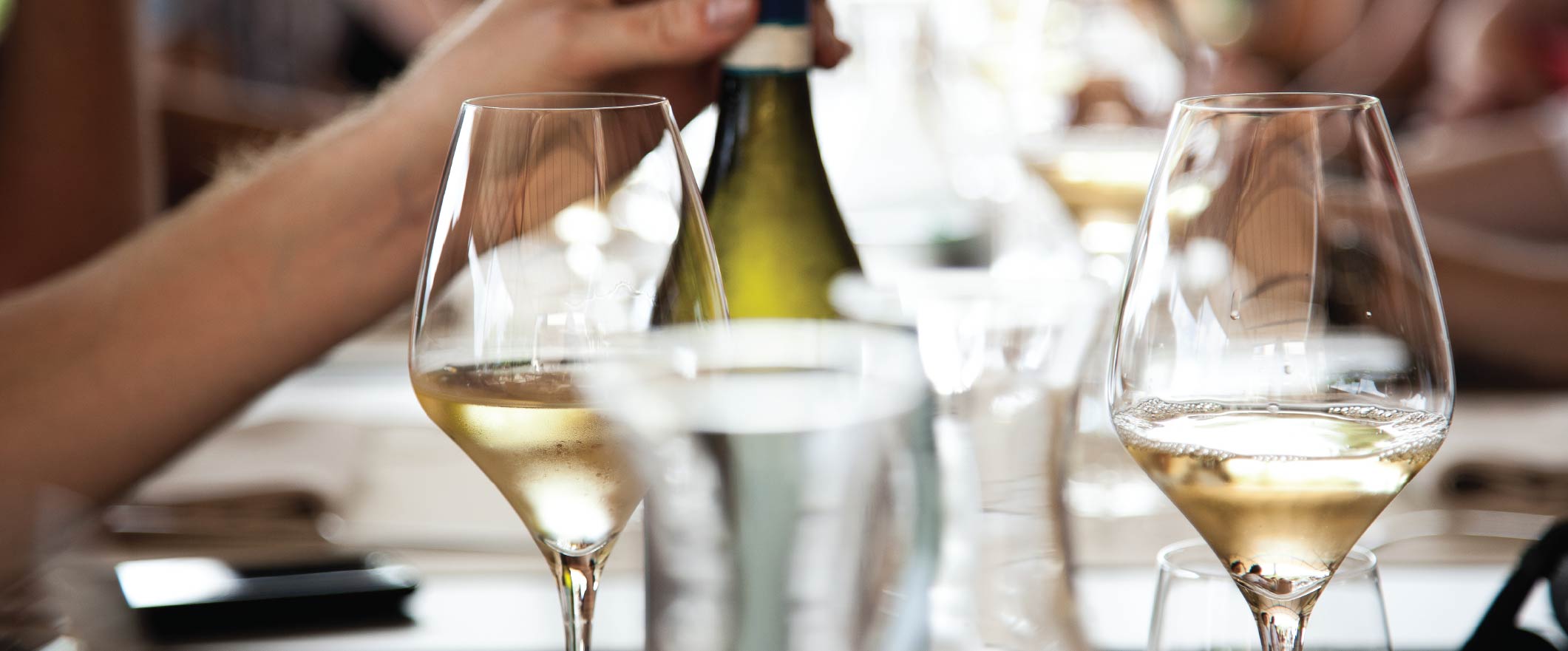
Piedmont’s White Wines
Given that Piedmont’s reputation is very much founded on its red wines, you might expect the region’s white wines to be treated as an afterthought. Fortunately, this is far from the truth. White wine grapes make up a third of plantings in Piedmont and are just as meticulously tended and carefully vinified (albeit in smaller quantities) as their red counterparts. The wines of Gavi, made from the Cortese variety, are, while coyly understated, wonderfully nuanced and evocative of lime, orchard blossoms and almond. More overtly perfumed (and no less charming) are wines from the Arneis variety, which was on the verge of extinction in the 1960s before its rediscovery and renaissance. The best-known examples come from Roero, just across the Tanaro River from Barolo, where they’ve earned the nickname “white Barolo” and are prized for their creamy textures as well as their vivacious aromas and flavours of apricot, hazelnut and pear.
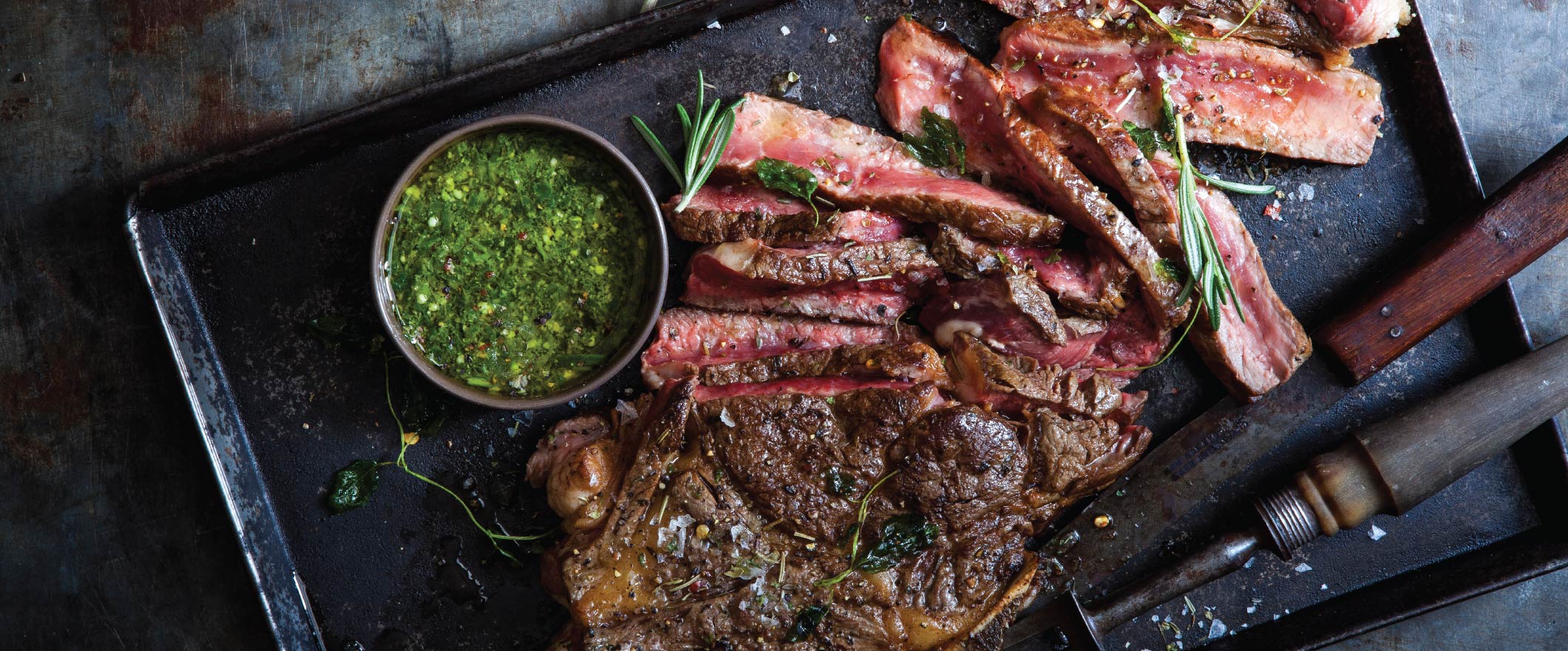
Piedmont’s Pairings
Like all Italian wines, the wines of Piedmont are best enjoyed in their natural habitat: at the dinner table, alongside fabulous foods.
Nebbiolo wines, with their big structure and intricate flavours, go beautifully with equally flavourful meats or cheeses – think prime rib or aged Asiago – although a mushroom risotto heaped with grated Asiago and shaved truffle ain’t too bad a pairing either.
Barbera is versatile enough pair with pretty much any tomato-based pizza or pasta.
Dolcetto works wonders with herbed meats or hearty veggies.
Grignolino shines alongside the more delicate flavours of chicken breast or pork tenderloin.
Gavi is amazingly versatile with seafood, creamy pasta, soft cheeses or veggie risotto.
Arneis can be revelatory with such cosmopolitan dishes as paella, sushi or mild pad Thai.
Looking for inspiration? Use the Food & Drink search to find limitless dishes to pair with your wines.
Get our Latest News!
Be the first to hear about new arrivals, special offers, virtual events and more.
Get to Know Us!
Everything we are in a nutshell.

